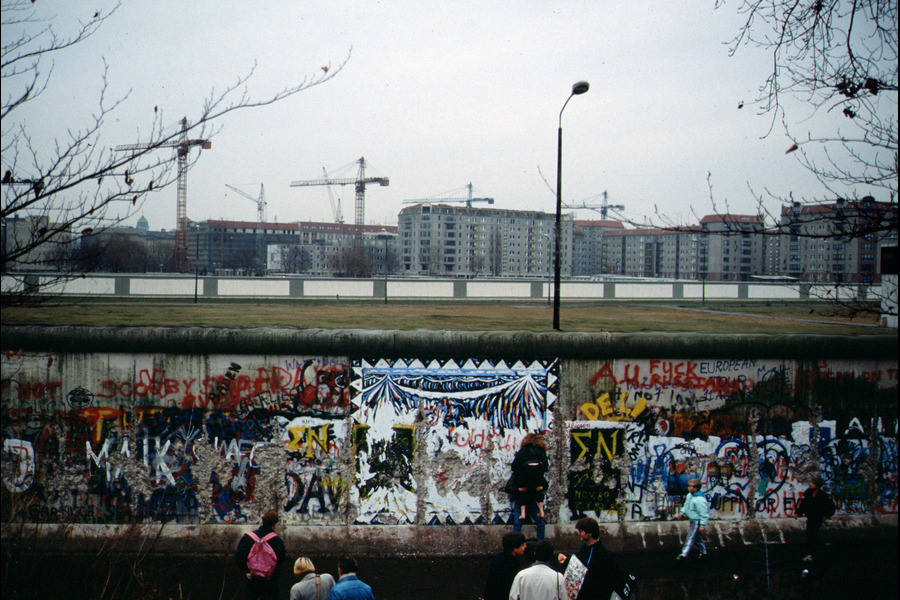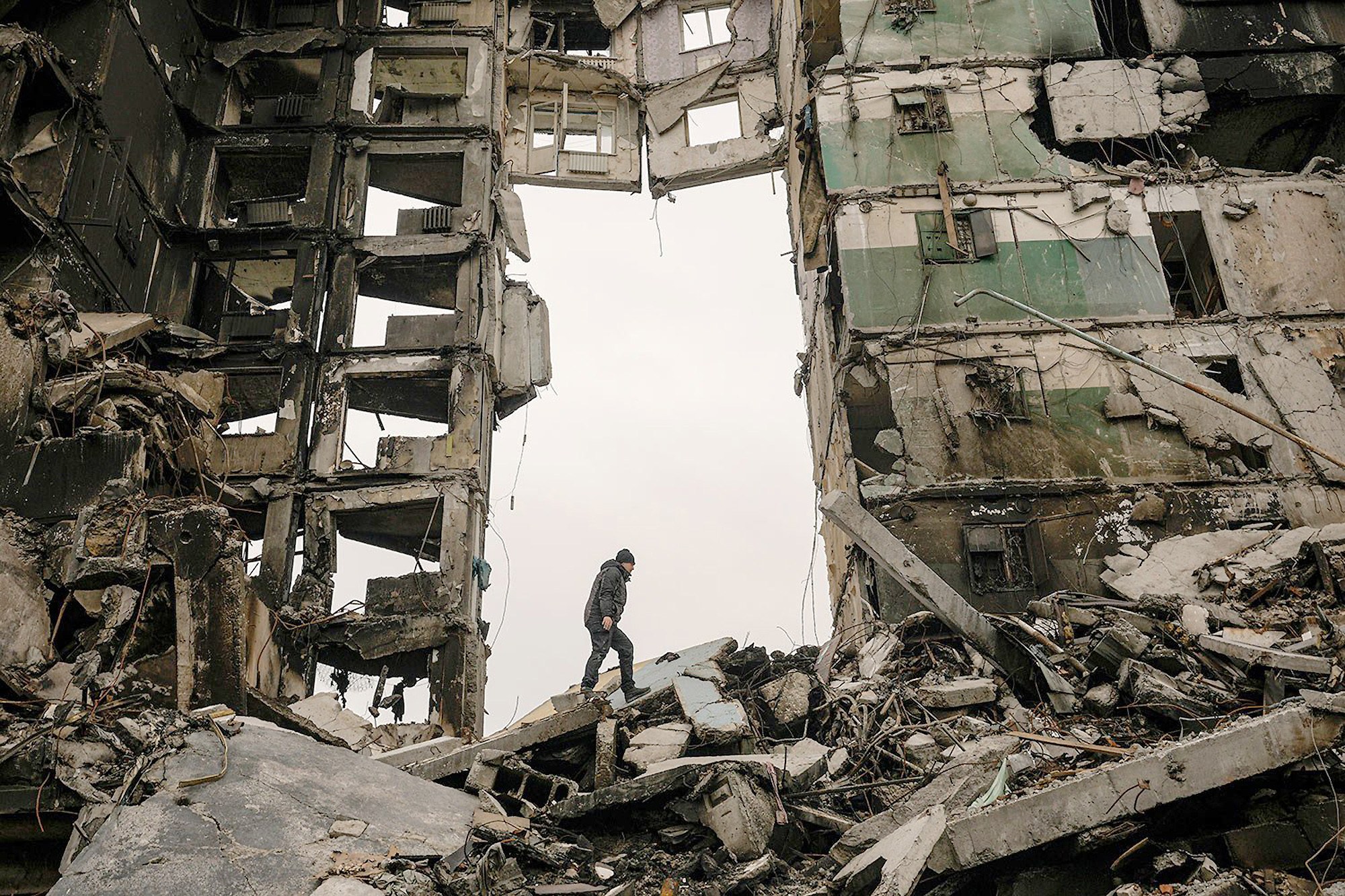Contested Memories and the Social Construction of the Term ‘Post-Soviet’

Published by The Lawfare Institute
in Cooperation With

Since the Russian invasion of Ukraine in 2022, scholars and practitioners have emphasized the importance of Central-Eastern Europe (CEE), a region they commonly call “post-Soviet.” Despite its common usage, the term “post-Soviet” to refer to the multiple states that emerged or reemerged from the dissolution of the Soviet Union in 1991 is problematic. It not only reinforces a colonial mindset that still frames the region as an area of influence of a defunct political entity but also allows Vladmir Putin, who has openly embraced a nostalgic memory of the Soviet Union, to legitimize his imperialistic plans for CEE.
***
Indeed, after the dissolution of the Soviet Union in 1991, the expression “post-Soviet” quickly became a popular way to refer to the 15 independent sovereign states that emerged—or even reemerged from former Soviet republics: Armenia, Azerbaijan, Belus, Estonia, Georgia, Kazakhstan, Kyrgyzstan, Latvia, Lithuania, Moldova, Tajikistan, Turkmenistan, Ukraine, Uzbekistan, and Russia. However, more than 30 years since, the use of this expression has significant political consequences. The term works as an ideological tool to create further divisions between what many perceive to be the capitalist West and the socialist/communist East, which feeds into a persisting rhetoric of “othering” the region.
Neo-Imperial Language Legitimating Divisions Within Europe
The use of “post-Soviet” as a qualifier to designate the CEE region reinforces imperialist notions of continuity with a past Soviet empire that denies the agency of CEE nations that continue to struggle to find their own sense of autonomy after the collapse of the Soviet Union. The term itself more or less encompasses the region Germans used to call “Zwischeneuropa,” meaning “the lands which lie between Germany, Italy and the former Russian Tsarist and Soviet empires,” home to “peoples who have been historically acting as buffers between the West and the East.” While a war in Ukraine goes on, it is important to resist these labels and pursue alternatives to designate the region. After all, if Latin America is not known as a “post-Iberic” space, why would it be natural to call the CEE “post-Soviet”?
For CEE states, the period following the end of the Cold War was a time of recalling their own frozen or marginalized past. The collapse of socialism introduced the theme of a “return to Europe,” which suggests that during Soviet occupation CEE states were outside of Europe, and now that communism had fallen, they needed to work their way back into it. Western Europe emerged then as a normative ideal for a proper European identity, which set standards for politics and economics, as well as “memory politics.” To complete their so-called unfinished revolution, CEE states had to find an earlier “Europeanness” that could form a basis for their efforts to enter the European community.
This meant joining not only a common political and economic system but also a common European mnemonic community in which memorialization of World War II and the Holocaust are central elements. Social disputes about how to memorialize the CEE communist past are key in understanding contemporary national identities in the region, especially with regard to Russia. In a relatively short span of time, most CEE states had to look at their own past to find new, non-Soviet-affiliated anchors to establish a national identity and to carve out a new sense of stability and autonomy that they had been historically denied. In short, many states were left scrambling, which created a deepening feeling of crisis, in which all sense of stability, predictability, and unity disappeared. This disruption of normality, due to the collapse of the Soviet Union, eventually led to a nostalgic longing for lost stability for many. In other words, citizens of CEE countries—amid the loss of stability and unifying national ideas—yearned for the “normality” and “regularity” of their lives living under the Soviet regime. Although it varies quite significantly from context to context, this nostalgia does not mean denying the atrocities of the communist era but, instead, serves as a way of dealing with difficult economic conditions and the loss of privileges in the aftermath of the breakup of the Soviet Union.
For anthropologist Dominic Boyer, the pervasiveness of nostalgic recall of socialist times in CEE is not about a desire to resurrect a defunct political order but is, instead, a yearning for the fantasy of socialism (and the psychological comfort it brings). According to Boyer, those longing for the “fantasy of socialism” look back to idealized memories of “a life once lived” or they imagine how their life “might have been lived otherwise.” This nostalgia, Boyer explains, “alleviates—even if only as a fantasy—some of the social anxiety brought about by rapid, traumatic change.” However, this nostalgia can be easily manipulated by right-wing populists to, for example, mobilize support for a war of aggression toward Ukraine, claim the region as a Russian zone of influence, deny political autonomy to CEE states, and more. And at the same time, Boyer claims, this nostalgia also reinforces the EU’s rhetoric of describing the region as underdeveloped and still in need of tutelage.
Because of CEE’s history as part of the Soviet Union, the EU often constructs the region as backward, unmodern, and undemocratic, and it becomes a reference point for what is and is not included in Western Europe’s own “Europeanness.” Estonian political scientist Maria Mälksoo once labeled this the “in-betweenness of CEE,” which refers to the sense that CEE is constructed as an “almost the same but not quite” other to Europe. “Post-Soviet” nostalgia only emphasizes the lower, subaltern position that CEE states occupy in the view of Western European states.
“Post-Soviet” as an Aid to Russian Imperialism
Nostalgic memories of Soviet times often also mean a positive view of Russia. Putin has openly explored Soviet nostalgia in the CEE region to legitimize his imperialistic plans. Many with this nostalgia regard the collapse of the Soviet Union to be “the greatest catastrophe of the century” that needs to be reversed. In this vein, the term “Soviet” then becomes a leitmotif in an imperialist discourse articulated around a sense of moral superiority over a degenerate, expansionist West that looks down on Russia. This rhetoric, populated by an imagery of lost, glorious times, nurtures the desire for restoration and vindication against the oppressive West.
The increasing usage of the term “post-Soviet,” especially in the English language, reinforces Putin’s assertion that the region is located in Russia’s sphere of influence, which is strategically vital to Russian global interests. Rooted in the context of the Cold War, the notion of Russia claiming the CEE region as its own sphere of influence—hence, the term “post-Soviet”—“illustrates the colonial mindset based on the denial of the right of self-determination” of CEE nations, as argued by Dovile Sagatienė. The use of the “post-Soviet” label not only recalls CEE’s (traumatic) historical ties to the former Soviet Union but also amplifies—and somewhat linguistically legitimizes— Russia’s claim to the region. For example, Putin said of Ukraine’s history, “[M]odern Ukraine is entirely the product of the Soviet era. We know and remember well that it was shaped—for a significant part—on the lands of historical Russia.” The term “post-Soviet” also disregards the painful and chaotic transformations in the region since the end of the Cold War, such as the Orange Revolution and Euromaidan.
Contested Uses of Post-Soviet Terminology
“Post-Soviet” captures a comfortable and known, but imaginary, security. In reality, the CEE region has a long history of geopolitical and geostrategic confrontation. As lands-in-between, the territories from the Baltic to the Black Sea, from Lithuania to Anatolia, are located where four great powers encountered each other, and challenged and confronted one another for political and military predominance, for centuries: Prussia (later transformed into the German Empire) and the Habsburg, Russian, and Ottoman Empires. They fought for territorial expansion and greater political power, and, through the system of alliances, drew in other European powers, such as France and Great Britain. All of them sought to expand their influence in the region, some collapsing as part of the legacy of World War I, others transforming into other entities, like Tsarist Russia into the Soviet Union. After the end of the Cold War, the U.S. and China also joined the mix, which only intensified a deep geopolitical competition for the region long called “shatterzone of empires.”
While the EU rejects the notion of territorial domination in spheres of influence, it embraces the project of exporting Western values as a way to establish power. Therefore, many critics see the EU’s normative power narrative toward the CEE region as projection of its power, especially when it tries to impose a specific form of EU-rule-and-norm-based governmentality on CEE states, which advances a very securitized, colonized form of control over a perceived EU periphery area.
Furthermore, the term “post-Soviet” imposes the view that CEE states are simply constructs of the post-Soviet present rather than a passive reflection of their communist past. As such, it reduces CEE states to a subaltern role of an object of intervention by great powers and international institutions, thus denying their agency as sovereign states.
The constant reminder that CEE is still being framed in relation to a Soviet period, in which it experienced oppression and violence, not only echoes the Russian narrative about nonlegitimate states that emerged after the collapse of Russian Empire in 1917 but also perpetuates the notion that these states are still under Moscow’s influence.
***
The use of the term “post-Soviet” to describe the CEE region after the 2022 invasion of Ukraine plays into Russian propaganda and mnemonic manipulation, and it reinforces westsplaining—when Western scholars and pundits disregard Eastern European voices when explaining conflicts in the region—“russplaining”—when Russian voices fail to respect Ukrainian agency and intellectual sovereignty—in both academic and political discourse. Rather than recognizing the capacity of 15 states to act in accordance with their own interests and needs, this term disregards CEE’s efforts and capacity for change in the past 30 years. Instead of “post-Soviet,” scholars and practitioners should opt for more historically precise qualifications such as, for example, “desovietizing countries” or “former Sovietized countries,” which reflect and accommodate the transformations that CEE states have gone through, including the adoption of independent constitutions, as well as laws memorializing that these states were forcibly occupied by the Soviet Union, and not voluntary members. Furthermore, the adoption of these alternatives would respond to current calls for the decolonization of studies about CEE, a region that has become especially targeted after Russia’s war against Ukraine.





